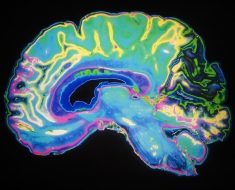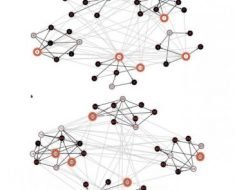
- Humans were thought to be unaware of the energy content of the foods they eat, and therefore, believed to have a tendency to eat the same amount of food in weight, regardless of its energy density.
- However, a new study finds that humans may have more nutritional intelligence than thought.
- The research shows that in a real-world setting, people reached a point where they limit the food they eat according to the calories it contains.
In everyday life, we are surrounded by well-promoted, palatable energy-dense high fat foods making it easy for people to exceed their energy expenditure, contributing to weight gain and obesity.
Until now, it has been generally accepted that people possess a willingness to overeat high-energy or calorie-rich foods, consuming them in the same way as energy or calorie-poor foods.
A new study from researchers at the University of Bristol suggests humans subconsciously limit the size of their meals according to the calorie content of the food.
This, researchers say, stems from inherent nutritional wisdom or nutritional intelligence, or people’s ability to respond to the nutritional content of the food that they eat or are planning to eat.
The study was published in The American Journal of Clinical Nutrition.
Real life and controlled eating
Speaking to Medical News Today, Dr. Jeff Brunstrom, professor of experimental psychology and one of the study authors, explained that the traditional way to look at dietary behavior is to “take the food and then to manipulate the food”. He said researchers then generally add extra calories or protein to the food and study the participant’s response to see if there is any change.
In the current study, researchers studied participants’ responses to meals eaten in a controlled environment. They monitored and recorded the meals of 20 healthy adults who lived in a metabolic hospital ward for 4 weeks.
The researchers also included “free-living” participants taking part in the U.K. national diet and nutrition survey in their study. They recorded all the foods and drinks the participants consumed via a diet diary for 7 days.
In total, the researchers analyzed 32,162 meals after excluding snacks (4 kcals/gm). The researchers recorded the calorie content, grams, and energy density (kcal/gm) of all meals.
The researchers used a two-component model of meal size. They used volume as the main signal in energy-poor foods and calorie content as the main signal for more energy-dense foods.
The “tipping point”
Speaking to MNT, the study’s lead author Annika Flynn, a doctoral researcher in nutrition and behavior described a “tipping point” where “as meals became more energy-dense, the caloric content of those meals actually started to decrease”.
According to Flynn, this means “people actually adjusted the amount of food they put on their plate in response to the energy density of the meal that they were going to consume,” suggesting people have sensitivity to the content of the meals they were eating.
Mark Schatzker, author of “The Dorito Effect” and who was not involved in the study, told MNT:
“The implications for our understanding of appetite and nutrition are far-reaching […] we may be fundamentally misunderstanding the nature of obesity. Instead of mindlessly consuming calories, perhaps there is some aspect of the modern food environment that is compelling otherwise nutritionally intelligent individuals to consume too much food.”
“[This study] challenges a long-held and pervasive assumption that humans possess a kind of primitive, unhinged lust for calories. It seems, rather, that we have an in-built ability to measure the caloric density of food as we consume it and unconsciously evaluate how much we should therefore eat.”
— Mark Schatzker
When asked if she would expect to see the same behavior in people who are overweight, Flynn said their paper did not factor in that scope.
However, Flynn said they did account for individual variation by using mean-centered analysis to “[..] try and address the fact that a larger person might eat a larger meal than a smaller person.”
Future research
The study is still in its early stages. The next steps, according to Flynn, are to study individual variations, to see which groups of people and individuals show different degrees of nutritional sensitivity.
The research adds to our understanding of nutritional intelligence and how it changes; however, according to Dr. Brunstrom, “we’re just sort of scratching the surface here.”
He said refocusing the narrative around “a more complex interaction” humans have with regards to differentiating calories could be helpful.
“[We need to think about] where this ability to discriminate calories comes from — is it something that is innate, is it something that is learned at a personal level or is it something that forms as part of a collective form of learning that occurs within and across generations, [forming] part of our collective cuisine or collective food practice?”
— Dr. Jeff Brunstrom
“All these questions are fascinating and we’ll probably be wanting to explore them in different ways,” Dr. Brunstrom added.
The take-home message of this study is that on some level, humans may be able to self-regulate their calorific intake and naturally adjust meal sizes to reduce the negative effects of eating too much.
Source: Read Full Article





